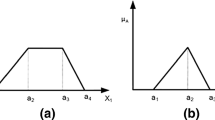Abstract
Detecting small targets in clutter scene and low SNR (Signal Noise Ratio) is an important and challenging problem in infrared (IR) images. In order to solve this problem, we should do works from two sides: enhancing targets and suppressing background. Firstly, in this paper, the system utilizes the average absolute difference maximum (AADM) as the dissimilarity measurement between targets and background region to enhance targets. Secondly, it uses a predictor to suppress the background clutter. Finally, our approach extracts the interested small target with segment threshold. Experimental results show that the algorithm proposed has better performance with respect to probability of detection and less computation complexity. It is an effective small infrared target detection algorithm against complex background.







Similar content being viewed by others
References
J. Y. Wang, and F. S. Chen. 3-D object recognition and shape estimation from image contours using B-splines, shape invariant matching and neural network. IEEE Trans. Pattern Anal. Mach. Intell. 16(1), 13–23 (1994).
P. Mulassano, and L. Lo Presti. Object detection on the sea surface, based on texture analysis. The 6th IEEE International Conference on Electronics, Circuits and Systems 2, 855–858 (1999).
A. Shashua. Projective structure from uncalibrated images: structure from motion and recognition. IEEE Trans. Pattern Anal. Mach. Intell. 16(8), 778–790 (1994).
B. S. Denney, and R. J. P. de Figuiredo. Optimal point target detection using adaptive auto regressive background predictive. Signal Data Process. Small Targets, Orlando, FL, USA. 4048, 46–57 (2000).
V. T. Tom, et al. Morphology-based algorithm for point target detection in infrared backgrounds. Signal Data Process. Small Targets, Orlando, FL, USA. 1954, 2–11 (1993).
J. X. Peng, and W. L. Zhou. Infrared background suppression for segmenting and detecting small target. Acta Electron. Sin. 27(12), 47–51 (1999).
Z. J. Ye, et al. Detection algorithm of weak infrared point targets under complicated background of sea and sky. J. Infrared Millim. Waves 19(2), 121–124 (2000).
C. I. Hilliard. Selection of a clutter rejection algorithm for real-time target detection from an airborne platform. Signal Data Process. Small Targets, Orlando, FL, USA 4048, 74–84 (2000).
B. N. Ulisses, C. Manish, and G. John. Automatic target detection and tracking in forward-looking infrared image sequences using morphological connected operators. J. Electron. Imaging 13(4), 802–813 (2004).
G. Wang, T. Zhang, L. Wei. Efficient method for multiscale small target detection from a natural scene. Opt. Eng. 35(3), 761–768 (1996).
Acknowledgment
This work has been supported by the National Defense Science Foundation of P.R. China (51401020201JW0521).
Author information
Authors and Affiliations
Corresponding author
Rights and permissions
About this article
Cite this article
Chen, Z., Wang, G., Liu, J. et al. Small Target Detection Algorithm Based on Average Absolute Difference Maximum and Background Forecast. Int J Infrared Milli Waves 28, 87–97 (2007). https://doi.org/10.1007/s10762-006-9164-x
Received:
Accepted:
Published:
Issue Date:
DOI: https://doi.org/10.1007/s10762-006-9164-x




